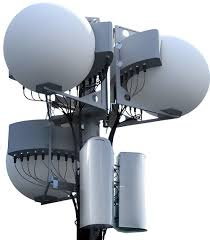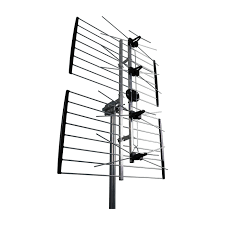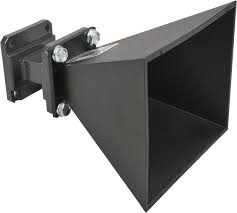Different Types of Antennas
Antennas are devices that transmit and receive electromagnetic waves, commonly used in radios, televisions, cell phones, and other wireless communication devices.
Antennas come in various shapes and sizes, each with its own advantages and disadvantages. This article will explore the different types of antennas and their functions.
Types of Antennas
Wire Antennas
 Wire antennas, which utilize conductive wires to transmit and receive radio signals, are commonly used in broadcasting, wireless communication, and amateur radio. They are easy to install and are effective for long-distance signal transmission and reception.
Wire antennas, which utilize conductive wires to transmit and receive radio signals, are commonly used in broadcasting, wireless communication, and amateur radio. They are easy to install and are effective for long-distance signal transmission and reception.
ad
Amateur radio operators appreciate wire antennas for their simplicity and customization options. Additionally, they are employed in military and defense settings for long-range communication and surveillance. Overall, wire antennas are versatile and widely used.
Lens Antennas
 Lens antennas use a curved surface or a dielectric lens to focus radio waves. These antennas are commonly used in satellite communications, radar systems, and wireless networks.
Lens antennas use a curved surface or a dielectric lens to focus radio waves. These antennas are commonly used in satellite communications, radar systems, and wireless networks.
The lens in these antennas works by bending and concentrating the radio waves towards a receiver or transmitter, which enhances signal strength and quality. Lens antennas are often favored over traditional dish antennas because they are smaller, lighter, and easier to transport and install. They are also more efficient and offer better coverage in specific applications. Overall, lens antennas are a practical and effective option widely used in various communication systems.
Array Antennas
 This type of antenna consists of multiple smaller antennas arranged in a specific pattern to function as a single antenna. Array antennas are used in various applications, such as radio broadcasting, wireless communication, and radar systems.
This type of antenna consists of multiple smaller antennas arranged in a specific pattern to function as a single antenna. Array antennas are used in various applications, such as radio broadcasting, wireless communication, and radar systems.
In array antennas, each individual antenna works together to transmit and receive signals. This collaboration strengthens the signal, improves its quality, and ultimately increases the range. A significant advantage of array antennas is their ability to be easily customized to optimize performance for different applications.
Aperture Antennas
 Aperture antennas use an opening or aperture to transmit and receive signals, with signals passing through an opening in a metal plate or other conductive material.
Aperture antennas use an opening or aperture to transmit and receive signals, with signals passing through an opening in a metal plate or other conductive material.
They are utilized in various applications, including satellite communication, radar systems, and wireless communication, due to their ability to handle high frequencies and provide high gain for long-distance communication.
Aperture antennas differ from other types by controlling signals through the size and shape of the aperture. Adjusting the aperture allows for control over the strength and direction of the signal, making them a versatile option for different applications.
Reflector Antennas
 A reflector antenna uses a reflective surface to focus radio or other electromagnetic waves onto a lower antenna, known as the feed antenna. The reflective surface, typically made of metal, is usually shaped like a paraboloid or another curved form.
A reflector antenna uses a reflective surface to focus radio or other electromagnetic waves onto a lower antenna, known as the feed antenna. The reflective surface, typically made of metal, is usually shaped like a paraboloid or another curved form.
When radio waves strike the reflective surface, they bounce and are directed towards the feed antenna positioned at the focal point. This process concentrates the radio waves into a narrow beam, allowing for effective long-distance transmission or reception.
Reflector antennas are commonly used in satellite communications, radar systems, and other applications requiring long-range, high-gain performance. They are also employed in radio astronomy to capture signals from distant celestial objects.
Micro strip Antennas
 A microstrip antenna is a flat antenna composed of a metal patch, typically made of copper or another conductive material, printed on a thin substrate, usually plastic or fiberglass. The metal patch can be square, rectangular, circular, or other shapes.
A microstrip antenna is a flat antenna composed of a metal patch, typically made of copper or another conductive material, printed on a thin substrate, usually plastic or fiberglass. The metal patch can be square, rectangular, circular, or other shapes.
These antennas are popular in modern communication systems due to their compact size, low profile, lightweight nature, and ease of integration with other electronic components. They are capable of transmitting or receiving radio waves across various frequency bands, from microwave frequencies to those used in satellite communications.
The metal patch in a microstrip antenna serves as a resonant element that radiates electromagnetic waves when energized by an external signal. The substrate provides support and insulation, while the ground plane on the opposite side of the substrate enhances the antenna’s efficiency.
Microstrip antennas are versatile and effective, finding use in a range of applications including mobile devices, wireless networks, and satellite communications.
📚 Also Read: What Is Signal-to-Noise Ratio and Why Does It Matter?
FAQ’s
What are antennas used for?
Antennas transmit and receive electromagnetic waves for wireless communication in radios, televisions, cell phones, and other devices.
What are wire antennas and where are they used?
Wire antennas use conductive wires for signal transmission and reception. They are popular in broadcasting, wireless communication, and amateur radio for their simplicity and long-range effectiveness.
How do lens antennas work?
Lens antennas use a curved surface to focus radio waves, enhancing signal strength and quality. They are compact and efficient, used in satellite communications, radar systems, and wireless networks.
What is an array antenna?
An array antenna combines multiple smaller antennas to improve signal strength and range. It’s customizable and used in broadcasting, wireless communication, and radar systems.
What are aperture antennas?
Aperture antennas use an opening to handle high frequencies and provide high gain for long-distance communication. They differ by controlling signals through the aperture’s size and shape.
How do reflector antennas work?
Reflector antennas focus radio waves onto a feed antenna using a reflective surface. This setup enhances long-distance transmission and is used in satellite communications and radar systems.
What are microstrip antennas?
Microstrip antennas are flat antennas with a metal patch on a thin substrate. They are compact, lightweight, and used in mobile devices, wireless networks, and satellite communications.
Conclusion
Antennas are crucial for enabling wireless communication across various devices and systems. From wire and lens antennas to arrays, apertures, reflectors, and microstrips, each type offers unique benefits tailored to specific needs. Understanding these types and their functions helps in selecting the right antenna for effective communication, whether for broadcasting, satellite communications, or radar systems.
ad


Comments are closed.